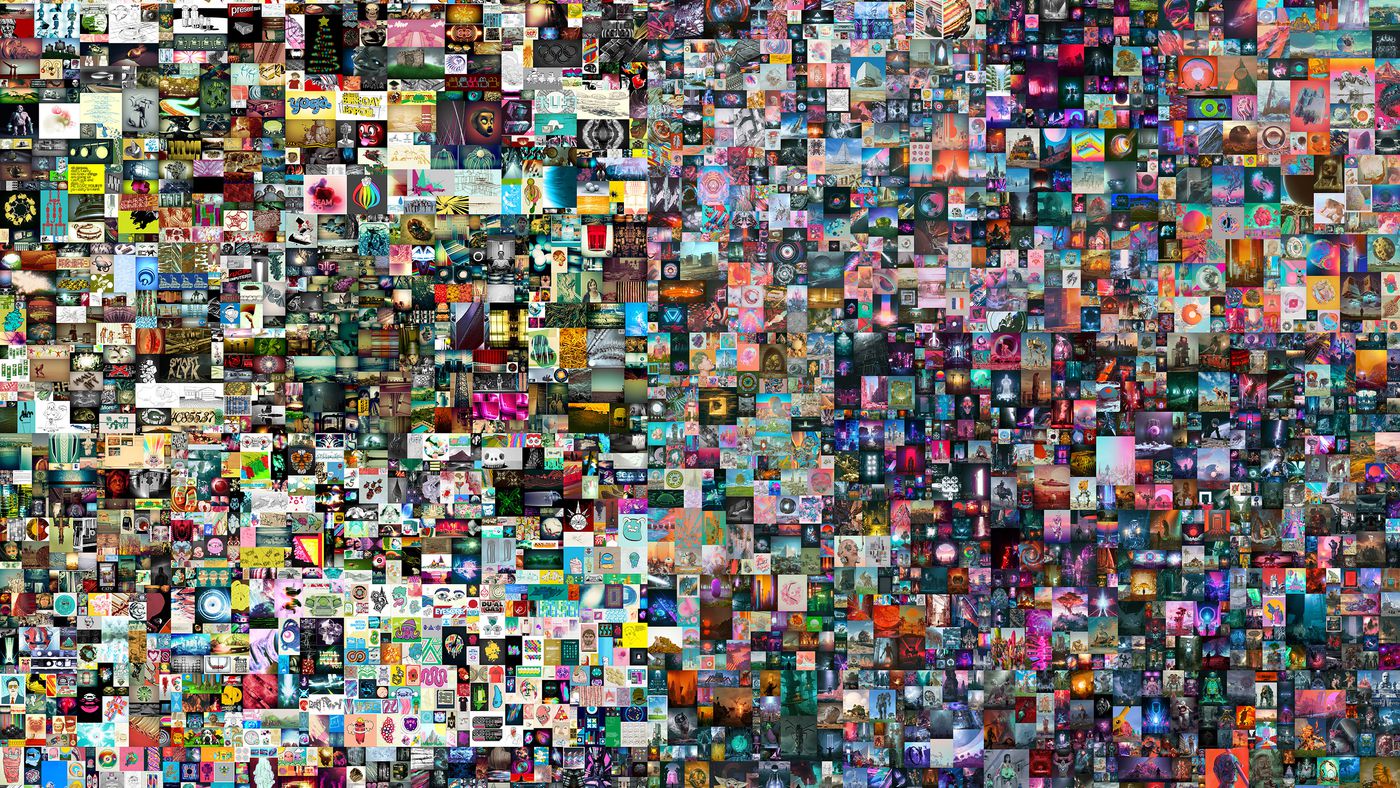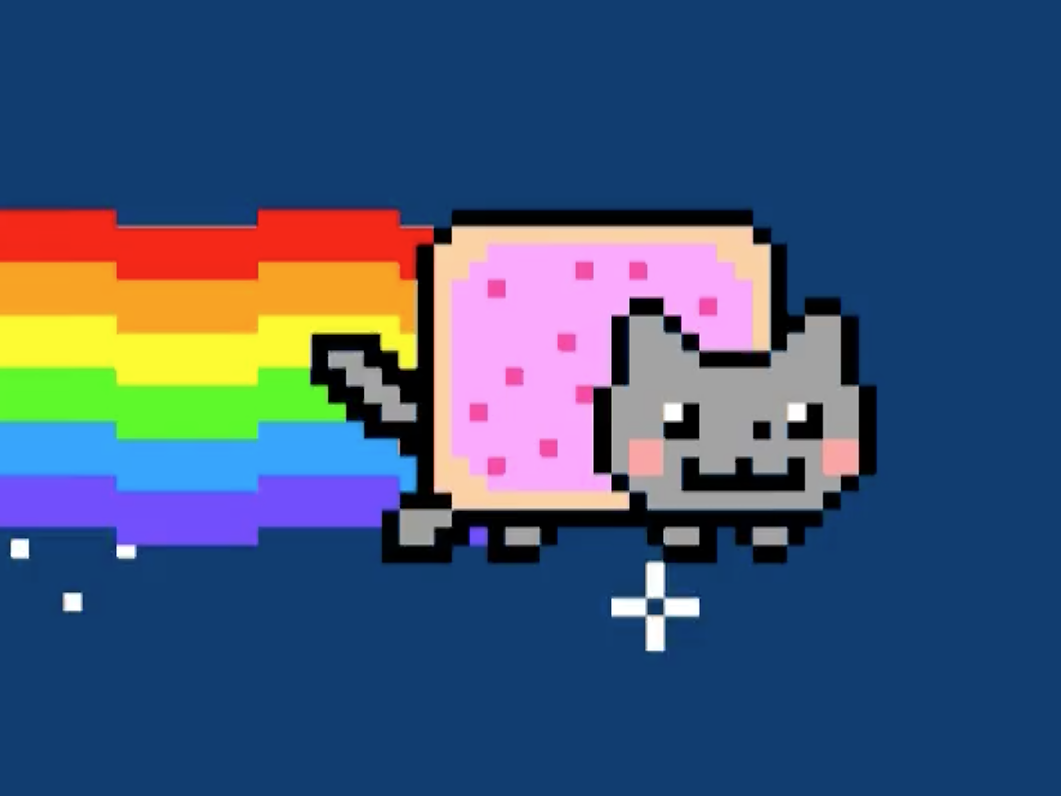This is part 2 of my series on the metaverse, NFTs and more. Check out part 1, The Metaverse, Explained, Kind Of

Photo by Clark Tibbs on Unsplash
Part 2: NFTs, Intrinsic Value and the New World Order
It was in early March of 2021 that digital artist, Mike Winkleman, sold an NFT for a 5000 piece collection of his art for a staggering $69 million through the auction house, Christies. It was the first ever purely digital artwork offered through Christies and was a grand entrance into mainstream for NFTs. You can read more about it here but it was a huge amount of money for something that represented a digital file that anyone else could get.
So what is this all about?

Mike Winkleman’s collection, Everyday: First 5000 days, that sold for $69m
NFTs originated back in the early 2010s with the rise of a concept of colored coins as part of the bitcoin ecosystem. This evolved and, in 2014, the first NFT was created and sold by Kevin McCoy. It was a piece of hypnotic digital art called Quantum.

Quantum by Kevin McCoy - the first digital art sold as an NFT
NFT = Non-Fungible Token. Non-Fungible means unique, one-of-a-kind. Think of it like this: the Mona Lisa is non-fungible, there is no other painting that is exactly the same as the Mona Lisa. There may be copies but you would not consider those the same as the original.
Now, the copies may be fungible. One copy could be exactly the same as another copy. If I swapped my copy for your copy, we’d still have the same thing. Now, if I swapped my original Mona Lisa for your copy of the Mona Lisa, those are very different things and you would have something quite different to what I have.
The token aspect is a representation of a thing (either physical or digital) and contains properties to explain what the item is. Essentially, NFTs are certificates of ownership. To be clear, NFTs are not the item, but a set of properties about the item, stored on a blockchain to establish ownership. Using a blockchain enables ownership to be tracked and stored for all to see. Through the concept of a distributed ledger, a blockchain offers the ability for ownership to be accurate and the history to be immutable. (For more on how a blockchain works, read my post). The most commonly used blockchain implementation is Ethereum which is often used for cryptocurrency but also supports the ability for NFTs to be stored on it too.

Nyan Cat went up for sale as a NFT
Alright, so we create tokens that we can now sell, representing unique (mainly digital) items. Someone can buy this token and they then get ownership of the underlying item. They can, in turn, sell that same token to someone else, transfering ownership rights. This provenance (i.e. history of who owned it) is stored in the blockchain for all to see.
I’m selling this screenshot of Elon’s song he’s selling about NFTs as an NFT as an NFT pic.twitter.com/NcQK7N1jdf
— greg (@greg16676935420) March 15, 2021
But what is actually meant by ownership? This is where it gets a bit weird, especially in relation to digital items, because how can you own a digital item? It’s just not the same as a physical painting. If somebody sells you an NFT for a digital file, that does not stop them sending copies of that file to other people. The use of NFTs for copyright has also not been established and therefore, owning an NFT does not mean that you own the copyright. This is important since it means owning an NFT does not necessarily mean you own the rights to reproduce or commercialise what your token represents. It is possible the NFT includes these rights, but in many cases it does not.
So what are you buying? Maybe just bragging rights. At least for now. There are interesting things being explored. Twitter is looking at NFT ownership validation for your profile picture avatar. Nike, with Cryptokicks, are tying the virtual and physical worlds together and we’ll see more and more companies lean into this space
Enter the metaverse. If a virtual universe becomes more of a reality, the concept of digital ownership (aka NFTs) gains more importance. This is where it gets interesting. As companies start exploring the metaverse, the concept of NFTs become more relevant as a way of tracking virtual ownership. As the metaverse expands, you could own your own virtual space within it via an NFT. The character you show up as virtually could be unique based on NFT ownership.
There is a lot of money flowing through NFTs. OpenSea, one of the largest NFT marketplaces, recently surpassed over $1 billion in monthly trading volume. Look, all of this is evolving fast and a lot of it is currently just speculation and hype. However, at its core the blending of the virtual and physical worlds is really starting to happen. Where it will end up is unclear, but the landscape is changing in exciting new ways.
In the next part, I will talk about the technology that could be used to power the metaverse and explore how you can get started right away.
Check out these resources for more detailed insights:
